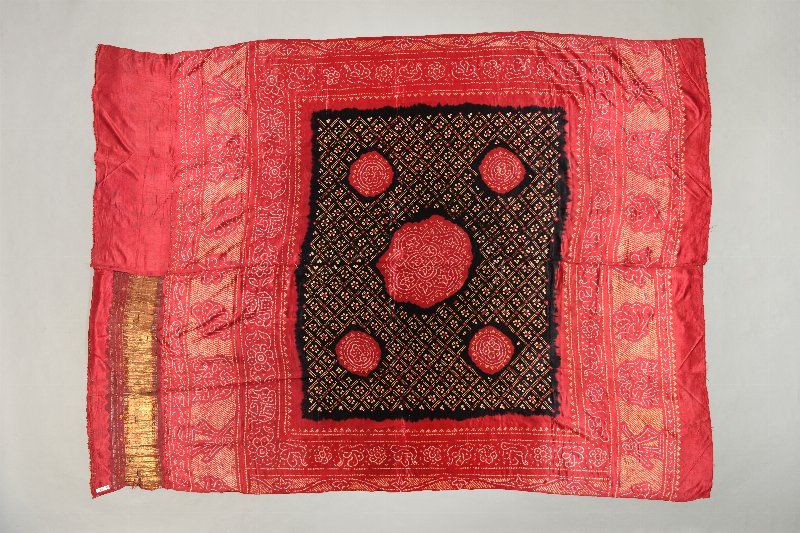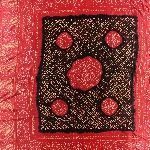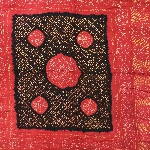| Native Name | Odhni |
| Object Number | 43-12-56 |
| Current Location | Collections Storage |
| Culture | Indian | Hindu |
| Provenience | India | Gujarat |
| Period | 20th Century | 19th Century |
| Date Made | Late 19th or Eearly 20th Century |
| Section | Asian |
| Materials | Silk | Badla |
| Technique | Bandhani | Tie Dyed | Woven | Sewn |
| Iconography | Floral | Peacock | Bird | Elephant | Woman |
| Description | This is a shawl of woven silk called a odhni from Gujarat. It is made of gajji satin-weave silk tie-dyed with both chunari and tritik bandhani techniques. Odhni is a type of traditional garment in Western India, worn and made by rural women. The style is characterized by the swirling white dots arranged in floral patterns on a red background. The dots are created using bandhani, a resist tie-dye technique that is popular in Gujarat, Rajasthan, Madhya Pradesh and Sindh. The peacock motif and the dancing women are associated with Krishna. It is possible that this is a piece of garchola, a type of wedding garment in Gujarat with motifs of dancing women, lotus, and elephants. The textile was purchased in Cairo. The term Bandhani (Hindi: बांधानी) is derived from the Sanskrit root bandh, which means “to tie.” Bandhani refer to both the dyeing technique and the finished textiles. To make a bandhani, the patterns are first transferred onto the cloth for the dyers to follow. Bandhanaris, the women who do the tie-dye, take small portions of the fabric and tie them up with a waxed thread that is thick enough to resist the dye. The thread runs from one point to the next throughout the entire textile. They can be reused for 10-15 times. The dyeing process runs from light to dark colors. Each time a new color is introduced, the knots have to be untied and tied again to create the desired patterns. Two widths sewn together. Rose red border all around, five discs on black center. Yellow, white, green and rose dots. At one end of the narrower width wide overlay hand of gold bullion. |
| Length | 160 cm |
| Width | 210 cm |
| Credit Line | Bequest of Mrs. Frances E. (Harry) Markoe, 1943 |
Report problems and issues to digitalmedia@pennmuseum.org.






